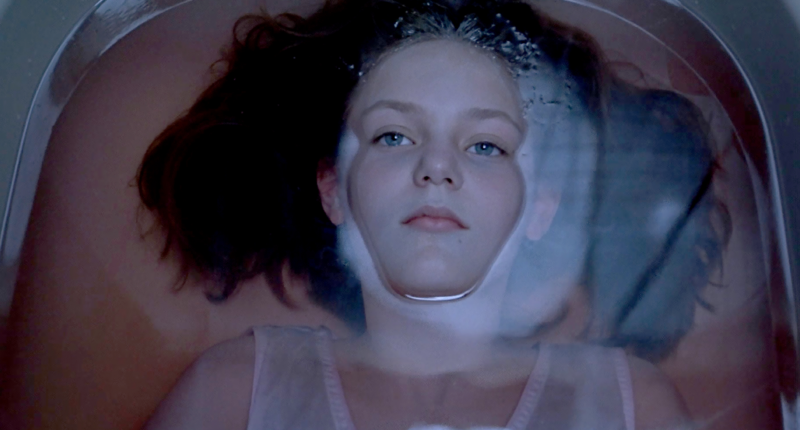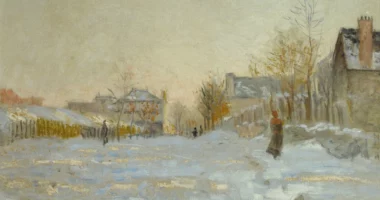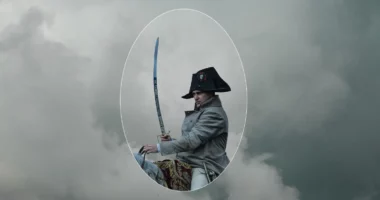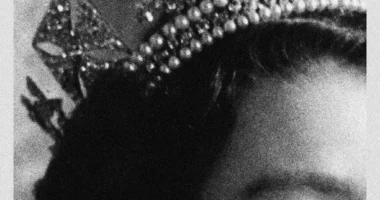For 25 years, Sofia Coppola’s films have served as a stylistic manual for how to be sad, or at least disaffected, in our modern age.
Her films consistently put us at eye level with young women trapped in gilded cages — whether it’s in a luxury hotel in Tokyo, amid the hallowed columns of Graceland or in a comfortable two-story suburban home under the watch of overprotective parents. She’s taught us how to lie out endlessly, corpse-like, by the Chateau Marmont pool, blocking out the crassness of the Sunset Strip with designer shades. Her characters consistently retreat to the bathtub, pensively soaking while they consider their lot. Through her lens, Marie Antoinette’s private faux-rustic retreat on the grounds of Versailles — seen by Antoinette’s real-life contemporaries as a sign of the oblivious excess of the monarchy — becomes cottagecore inspo, some well-deserved grass to touch for a woman who just needs some Me Time.

Ms. Coppola’s heroines escape the world in the tub: (clockwise from top left) Hanna R. Hall in “The Virgin Suicides”; Scarlett Johansson in “Lost in Translation”; Cailee Spaeny as Priscilla Presley in “Priscilla”; Kirsten Dunst starring in “Marie Antoinette.”
I’ve lost track of how many of my cinephile friends I’ve seen post their pilgrimages to the Park Hyatt Tokyo, where a hangdog Bill Murray sipped whisky and contemplated the meaninglessness of life in “Lost in Translation.” Even I have not been able to resist zipping up to the 52nd floor to smoke cigarettes and listen to smooth jazz over the twinkling lights of Shinjuku.
Ms. Coppola’s sense of good taste is undeniable and effortless, and her movies make you feel young, beautiful and sad. It’s an incredibly seductive proposition, one that has earned her outsize critical respect, a cult fan following and a distinctive place in the contemporary canon.
She’s also had an enormous influence on the iconography of feminine melancholy — as much as Martin Scorsese has had on the language of male insecurity and rage — manifested in all corners of the culture, whether it’s Fashion Week runways, the heroines of the writer Ottessa Moshfegh or even the odd Katy Perry or Shawn Mendes music video. At a time when real-life adolescent malaise is once again at the forefront of conversation, Ms. Coppola’s canon demonstrates that while she didn’t invent the idea of the sad girl, she’s elevated it to the status of icon: devising an intoxicatingly inert heroine who confers on sadness a kind of hypnotic allure.


Her films sit in a rich tradition of art about melancholy made by women for women: The Brontë sisters spun Gothic romance epics about ghosts and girls; Emily Dickinson’s poems were posthumously embraced by those who knew what it meant to feel like Nobody; and L.M. Montgomery’s “Anne of Green Gables” features the titular heroine dressing up as a corpse and having her friends send her off for a river burial, with disastrous results. In the 1990s, when Ms. Coppola started her film career, somber musicians like Fiona Apple and Shirley Manson reigned, parents of teenagers were hand-wringing about cutting and bulimia, and books about morbid adolescent girls like “Reviving Ophelia” flew off the shelves.
But in recent years this notion of morose young women has gained a political dimension. In 2014, Audrey Wollen, a writer and artist, posted her “Sad Girl Theory” to Instagram, a JPEG manifesto that crystallized a very online subculture of despondent femininity that had been bubbling up on Tumblr and LiveJournal. In an argument that felt very interesting and transgressive in the twilight of the relatively placid Obama years, when passivity could still seem subversive, Ms. Wollen posited that to be a depressed woman or girl was not a sign of giving up but an act of radical resistance: an open rebellion against the rise-and-grind culture and a refusal to just smile and participate in an unjust, violent society.
This notion of the sad girl as not just a victim but a disrupter was basically the entire subtext of Jeffrey Eugenides’s 1993 novel “The Virgin Suicides” — which in turn served as the source material for Ms. Coppola’s debut, which premiered in 1999. Her subsequent filmography has remained anchored to this idea, and her films, chopped into GIFs and stills and memes, enjoy a parallel digital existence as a kind of visual companion to Ms. Wollen’s thesis, forming a cornerstone of the Sad Girl Internet.
Ms. Wollen had put to words what so many young women have gravitated to not just in Ms. Coppola’s narratives but also in her visual vocabulary: It’s OK, even honorable, to be a sad girl. And there’s no good reason sad girls can’t just stay sad.
Ms. Coppola’s often-identified signature shot is the image of a girl gazing out a window — usually a passenger window — a framing that renders just about everyone pretty and sympathetic. The audience’s focus is almost never on what can be seen through the window and nearly always on the girl doing the gazing, and the temperature of the gaze rarely rises above wistfully blasé.
Young women gazing through a window, in (clockwise from top left) “Priscilla,” “Marie Antoinette,” “Lost in Translation,” “Somewhere,” “The Virgin Suicides,” and “Lost in Translation.”
Of course, it’s a privilege to be blasé, and Ms. Coppola’s own privilege is something her detractors have picked up on from the beginning. Many see the characters and milieus she depicts as inextricable from her pedigree as the daughter of Francis Ford Coppola. (However you feel about her or the term “nepo babies,” Sofia Coppola is one of the most visible and undeniable of our time.)
The child of the director and his wife, Eleanor, Ms. Coppola more or less jumped out of the womb and onto the screen, appearing as an infant in the baptism scene at the end of “The Godfather.” She more famously played the role of Mary Corleone in “The Godfather Part III” in 1990, and her acting career essentially ended after that. But by then she was well positioned to occupy the rarefied worlds of alternative film, fashion and music, insulated from snarky criticism and the crassness of commercial demands.
I don’t see the presence of these rarefied worlds — either in her biography or as depicted on the screen — as a shortcoming. She is far from the only director to train her camera on the pretty and expensive rather than the cheap and dull, and escapism can lead to enlightenment in the right artist’s hands. Arguably, Ms. Coppola is exceptional as an artist because nobody among her contemporaries succeeds in preserving that pristine air the way she does, especially when used to embody an explicitly feminine worldview. As a filmmaker, she’s been able to pair a laser vision for images of covetable cool with the potent power of narrative, creating moody tales of lyrical loneliness in which her admirers can plant a flag of identity.
If you’ve ever attended a Christmas church service, you may have heard a line from the Gospel of Luke that I’ve always particularly liked. It’s in the part of the nativity story where a bunch of angels start singing hosannas and the shepherds go to Bethlehem and see what all this noise is about. In Luke 2:19, amid this frenzy, we’re given a brief, seemingly unprompted glimpse into the mind of a teenage virgin at the center of all of it: “But Mary treasured up all these things and pondered them in her heart.”
This line frequently wanders into my head when I’m watching the films of Ms. Coppola. It suggests simultaneous awe and self-possession, an independence of experience within the eye of a storm. Lynn Hirschberg, in the introduction to Sofia Coppola’s “Archive,” a four-pound, macaron-pink coffee-table book published this year, articulated the director’s virtues thus: “She is the personification of grace under pressure, of talent without unnecessary bombast, of creativity ruling the day rather than rage or fear or noise.” Ms. Hirschberg is celebrating Ms. Coppola’s ability to create while forgoing the lowbrow inconvenience of struggle or sweat — immaculate conception, if you want to call it that.
There may be a rebelliousness in this stillness, and a romance — of taking up things and pondering them in your heart. But on the most basic level, what Ms. Hirschberg described as a strength is a tendency to abstain, to not do something — a tendency shared by many of Ms. Coppola’s protagonists. In their passivity, her heroines serve as a conduit to envision ourselves in an impossible situation, in another stratosphere of holy privilege — something as impossible and holy as, say, meeting and marrying Elvis Presley.
That’s the premise of “Priscilla,” Ms. Coppola’s adaptation of Priscilla Presley’s memoir, “Elvis and Me,” which arrived in theaters last week. It’s the story of a 14-year-old American girl, living with her parents on a U.S. military base in Germany in 1959, who is invited by an associate of Elvis Presley to go to a party at his house.

So begins a courtship whose wildly uneven dynamic lasts all the way to their marriage: a rock deity and a hopelessly enamored teenager plucked out of anonymity. The memoir itself is a wild ride, eye-poppingly lurid but also achingly good at evoking the push and pull of being a teenage military brat and the anointed queen of Graceland. So why did I walk out of Ms. Coppola’s film with a shrug?
As a television writer, I am constantly given notes about “agency,” which most people seem to think should come in the form of a fight, an escape, a declaration of intent: the final girl in a horror movie picking up a baseball bat and fighting back. I tend to think this is a pretty limited idea of what constitutes agency — but it’s telling that when Priscilla does eventually make a proactive decision, the moment is strangely sapped of momentum. She, like so many of Ms. Coppola’s characters, is not built to be a girl who makes things happen. She’s built to be a girl whom things happen to.
The time period that “Priscilla” takes place in was famously an era of huge cultural upheaval — lots of movies and TV shows have been made about this. “Priscilla,” in contrast to its source material, is a 2023 sad-girl vision of the 1960s, where the idea of growing up, or the passage of time, even in a coming-of-age story, doesn’t really have a place. Her Elvis doesn’t even get fat.
This is what’s missing from the modern incarnation of the sad girl: not agency, necessarily, but change. Real change, spiritual change, not just a costume change.
What Ms. Coppola’s sad girls can do, however, is see. The romance of the sad girl is the dream of being a woman who sees far more than the people around her, even if circumstances allow her to do so little. What better avatar for an internet age when so many see and experience the world through the glass of a screen — and feel, perhaps, unable to act, but certainly enabled to feel.
Granted access to the privileged confines of Ms. Coppola’s films — be it the Park Hyatt, Versailles or Graceland — there isn’t much asked of us, the audience: We’re simply invited to participate in the glamorous inertia. The sharper moments of potential darkness are typically buffered by the naïveté of our young protagonists and the glints of beauty they can find in a cruel and confusing world. And they inevitably, in turn, become glints of beauty for us to screen-grab and add to our personal mood boards.

Seen this way, it’s no wonder Ms. Coppola’s vision has become irresistible fodder to be digested and disseminated and canonized in the culture at large. After all, who likes change? Who likes time? Who likes aging?
The sad girl has always been about withdrawing from the world, not about changing it. In Ms. Coppola’s films, rage and fear and noise are suspended for a few hours, leaving a comforting gloss of aspirational ennui for us to take refuge in, ideally in a dark room with surround sound.






